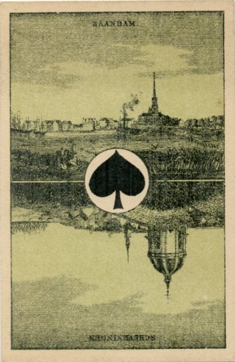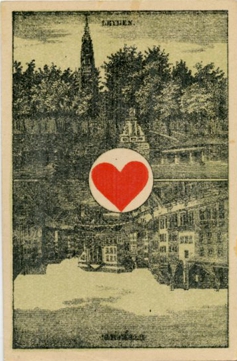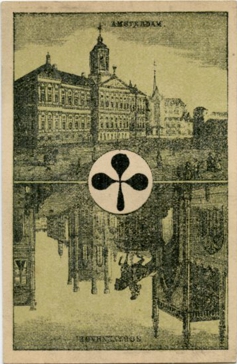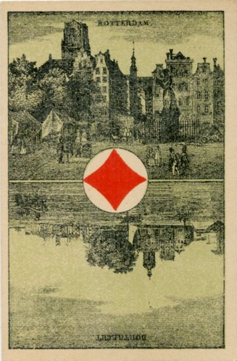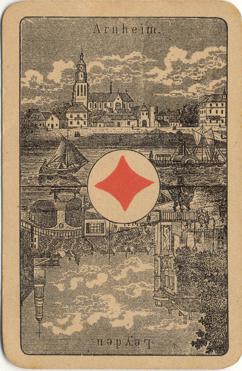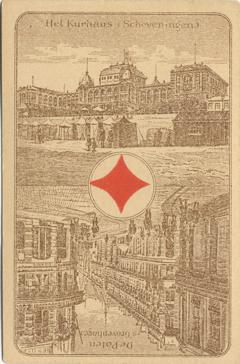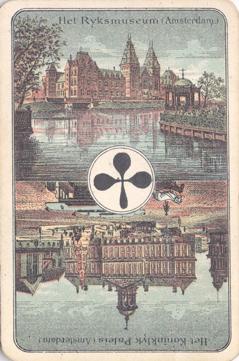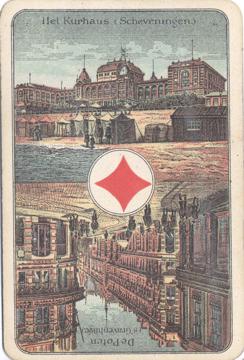|
|
|
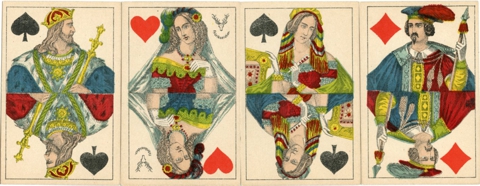 |
This first deck here was printed and published by Frommann & Bünte from Darmstadt, Germany, around 1885. The set of aces came with a pattern, that we here call the "sofa pattern", because 2 of the queens are sitting on a sofa, the other queens wear veils. QH with company logo. The aces show b/w scenes in a greenish tone of Zaandam, Scheveningen, Leiden, Utrecht, Amsterdam, The Hague, Rotterdam and Dordrecht. |
